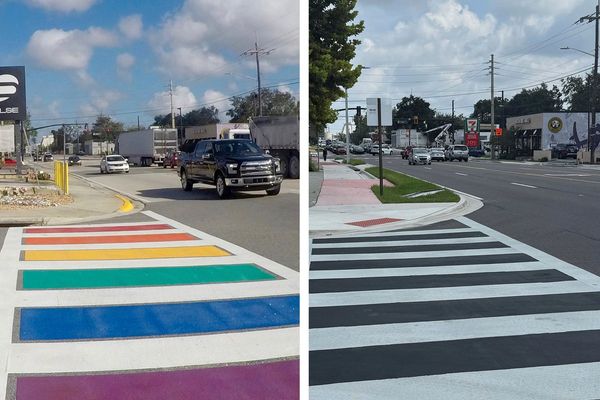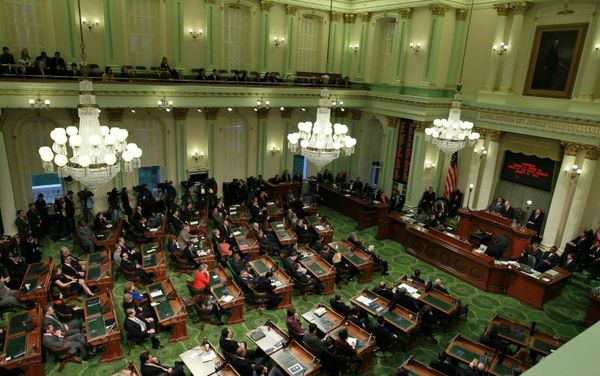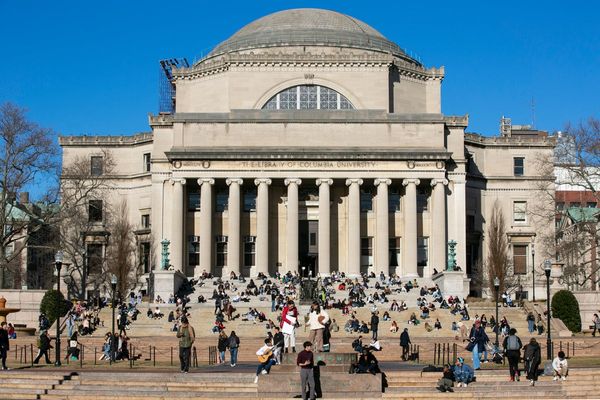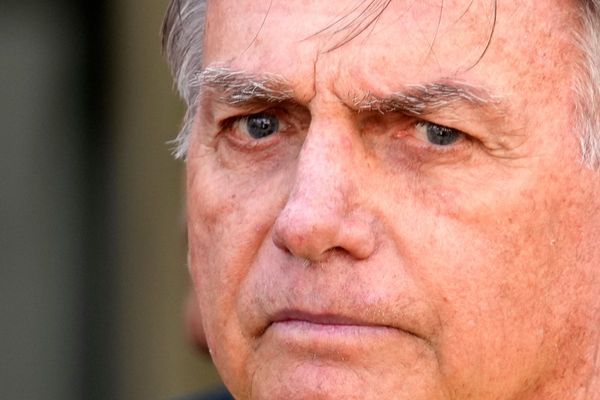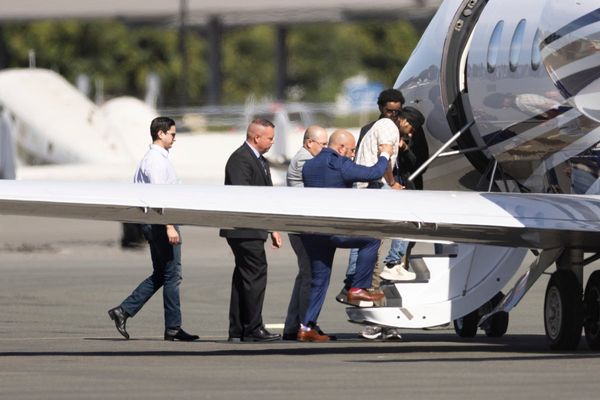
Donald Trump has ruled out sending US troops to Ukraine to enforce a potential peace deal with Vladimir Putin, tempering a promise to provide Kyiv with security guarantees that European allies had called a significant breakthrough towards halting the Kremlin’s invasion of Ukraine.
Asked during a phone interview with Fox News whether he could assure listeners – including many members of his Maga base who support an isolationist America-first foreign policy – that the US would not put troops on the ground in Ukraine, Trump said: “You have my assurance, and I’m president.”
He did, however, say Washington may be willing to provide air support to Ukraine in order to backstop a deal, in what would still be a remarkable shift in his administration’s policy on the conflict.
“There’ll be some form of security. It can’t be Nato,” he said, ruling out Ukraine’s admission to the transatlantic bloc. “They’re willing to put people on the ground. We’re willing to help them with things, especially, probably, if you could talk about by air.”
The White House spokesperson, Karoline Leavitt, said Putin and Volodymyr Zelenskyy had both expressed “a willingness to sit down with each other”. She added: “I understand accommodations for that meeting are under way.”
Bloomberg reported that Hungary has expressed interest in hosting such a meeting. The French president, Emmanuel Macron, had proposed Geneva, with the Swiss foreign minister promising “immunity” to Putin despite an indictment by the international criminal court.
Russia has said it views the deployment of troops from Nato countries to Ukraine as a red line in negotiations. Trump dismissed that concern on Tuesday and said he was still optimistic about the potential to reach a deal with Putin.
Nato’s secretary general, Mark Rutte, had described Trump’s pledge on Monday to provide security guarantees to ensure Russia would abide by a peace deal as a significant breakthrough, as Zelenskyy and European leaders convened at the White House for an extraordinary summit.
In a press conference during the summit, Trump declined to say whether US troops could be deployed to Ukraine in what could provide a “tripwire” to prevent Russia from resuming the conflict in the future.
European leaders held fresh talks on Tuesday after their White House meeting with Zelenskyy amid uncertainty over Putin’s readiness to meet the Ukrainian president.
Sources close to the talks told Agence France-Presse that Putin had proposed meeting with Zelenskyy in Moscow, hostile territory for a Ukrainian president who has reportedly survived a number of Kremlin assassination plots. Zelenskyy was said to have declined the invitation.
It is unclear if or when the two leaders will meet. Putin is scheduled to attend a Shanghai Cooperation Organization security bloc meeting in Tianjin, China, at the end of August, complicating plans to hold a bilateral summit in the coming two weeks.
The European “coalition of the willing” first met virtually, co-chaired by Keir Starmer and Emmanuel Macron, before joining a video conference hosted by the European Council president, António Costa.
Europe’s flurry of diplomacy is aimed at pushing Trump to take a tougher line with Putin, days after their friendly summit in Alaska.
Trump, along with several European leaders in Washington on Monday, said Putin had agreed to face-to-face talks with Zelenskyy in the coming weeks in an attempt to end the three-and-a-half-year war in Ukraine. Moscow, however, has yet to confirm that any such meeting – which would be the first between the two leaders since the invasion – is in the works.
The Kremlin aide Yuri Ushakov has said only that Putin and Trump discussed the idea of “raising the level of representatives” in Ukraine talks. In remarks late on Monday, Ushakov did not clarify what that would entail and made no mention of a possible trilateral meeting with Trump and Zelenskyy.
On Tuesday, the Russian foreign minister, Sergei Lavrov, told state TV that any meeting between the Russian and Ukrainian presidents would have to be prepared “very thoroughly”.
In his interview with Fox News on Tuesday, Trump conceded it was possible that Putin did not want to make a deal. “We’re going to find out about President Putin in the next couple of weeks … It’s possible that he doesn’t want to make a deal,” the US president said, adding that Putin would face a “rough situation” if that were the case.
At the heart of Tuesday’s talks among European allies was the question of what security guarantees could be offered to Ukraine. On Monday, Zelenskyy described security guarantees as “a key issue, a starting point towards ending the war” and he appreciated Trump’s indication that the US was ready to be part of that guarantee.
Zelenskyy said those guarantees would be “formalised in some way in the next week or 10 days”, which could prove to be a long time when it comes to diplomacy involving Trump’s White House.
In a social media post late on Monday, Trump said the White House talks included plans for European countries to provide security assurances to Ukraine with the US acting as “coordinator”.
Britain and several European allies have floated the idea of a “reassurance force” that could be sent to Ukraine under a future peace deal to deter renewed Russian aggression. Their plans would need firm US backing and Trump has been resistant to deploying US troops as guarantors of any settlement.
Moscow issued a statement on Monday evening rejecting any prospect of Nato personnel being deployed in Ukraine. “We reaffirm our categorical opposition to any scenarios involving the stationing of a Nato contingent in Ukraine,” Russia’s foreign ministry said.
Other proposals for security guarantees include western allies offering Ukraine article 5-style protection, similar to Nato’s collective defence pledge that treats an attack on one member as an attack on all.
In a statement after Monday’s White House meeting, Italy’s prime minister, Giorgia Meloni, said that while Ukraine would not be joining Nato, western allies would commit to “a collective security clause that would allow Ukraine to benefit from the support of all its partners, including the United States, ready to take action if it is attacked again”.
Zelenskyy has made clear that Ukraine would reject any deal limiting the size of its armed forces, insisting that “a strong Ukrainian army” must be part of the country’s security guarantees. These proposals run counter to the conditions Putin has previously outlined as acceptable for ending the war.
While western leaders adopted an upbeat, congratulatory tone toward Trump at the White House, the gulf between Russia’s demands and Ukraine’s willingness to concede remains vast. There remains widespread confusion over what exactly Trump proposed and what, if anything, Putin agreed to during the Alaska summit. Some fear Trump may have overstated the outcome and misjudged Moscow’s willingness to compromise.
Monday’s White House meeting shed little light on Putin’s territorial terms. The Russian leader has demanded Ukraine’s withdrawal from Donetsk and Luhansk, but Zelenskyy has set a firm red line against ceding land beyond the present occupation or legitimising Moscow’s control.
Some observers say that for all the diplomatic manoeuvring, there has been little real movement towards ending the war. “Nothing had happened in Anchorage on Aug. 15th. Nothing happened yesterday in Washington DC,” Gérard Araud, the former French ambassador to the US, wrote on X. “Putin, Zelenskyy and the European leaders were all relieved: they had avoided Trump taking unwelcome decisions. It was the triumph of empty vagueness and meaningless commitments.”
